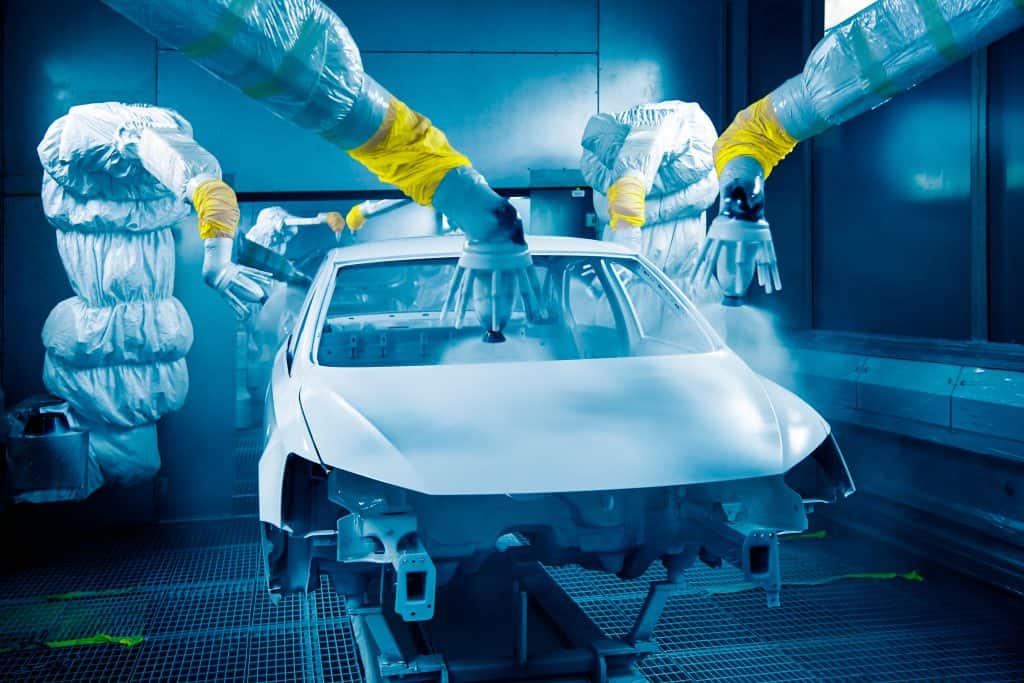
How to Paint Plastic Car Parts Without a Hitch?
Share
Every car owner has experienced the frustration of faded, scratched, or damaged plastic parts. Whether you've repaired a bumper or are looking to refresh the look of your vehicle, knowing how to paint plastic car parts can save you time and money. Painting these components requires a different approach compared to painting metal, mainly due to their unique surface properties. In this article, we will delve deep into the techniques, tools, and methods required to give your car plastic parts a fresh coat of paint.

Understanding Plastic Car Parts
Plastic is widely used in the automotive industry because of its lightweight and corrosion-resistant properties. However, these same properties can make it challenging to paint. Factors like flexibility, texture, and surface chemistry come into play. The most common plastic types in vehicles are polypropylene, PVC (polyvinyl chloride), and ABS (acrylonitrile butadiene styrene).
Before starting, it helps to understand how these plastics react with paint. Unlike metal surfaces, plastic does not have a natural adhesive bond, which can lead to issues like peeling or flaking paint if not handled correctly. Hence, learning how to paint plastic car parts requires specific techniques to ensure optimal adhesion and a durable finish.
Gathering Necessary Tools and Materials
To achieve a successful paint job, it is vital to gather the right materials and tools. Heres a list of items you will need:
- Sandpaper (various grits)
- Plastic primer
- Automotive paint
- Clear coat
- Masking tape
- Cleaning solution (isopropyl alcohol or soapy water)
- Spray gun or spray cans
- Safety gear (gloves, mask, goggles)
Once you have your tools, you can prepare your workspace for an organized painting process.
Preparation: The Key to a Great Paint Job
Preparation is critical when it comes to how to paint plastic car parts. You may find that following these steps leads to a smoother finish and improved durability:
1. Clean the Surface
Begin by thoroughly cleaning the plastic parts with soap and water or a cleaning solution. This removes dirt, grease, or any chemicals that may hinder adhesion.
2. Sanding the Plastic
Use sandpaper (preferably 400-grit) to light scuff the surface. This creates rough spots for the primer and paint to stick. Make sure to wipe it down afterward to eliminate any dust.
3. Apply Primer
A plastic primer is essential. It enhances adhesion and ensures the paint bonds well. Apply multiple thin coats of primer according to the manufacturers instructions, allowing each coat to dry before adding the next.
Painting Steps You Should Follow
Once the primer is fully cured, its time to paint! Heres how to move forward:
1. Choose the Right Paint
There are various options for automotive paint, including spray cans and professional paint systems. Opt for a high-quality paint designed specifically for plastics for the best results. You can find a more detailed analysis of types of car paint here.
2. Applying the Paint
Maintain a distance of 8-12 inches and apply multiple light coats rather than a single heavy coat. This prevents runs and inconsistent texture. Allow each coat to dry according to package instructions between applications.
3. Clear Coating for Protection
Once you have achieved the desired color, finish the project with a clear coat. This provides protection against UV rays, scratches, and other contaminants. Apply it in the same manner as the paint, in thin layers.
Conclusion: Keeping Your Car Looking Sharp
By following these guidelines on how to paint plastic car parts, you can rejuvenate your vehicle's appearance and protect its components from wear and tear. With the correct preparation, tools, and processes, youll achieve a professional-quality finish. But remember, practice makes perfect, and taking your time is the key to success!
For more tips on maintaining your cars paint and other aspects, feel free to consult this resource on fixing paint scratches.

FAQ
1. Can any paint be used for plastic car parts?
No, it is crucial to use paint specifically designed for plastics to ensure proper adhesion and durability.
2. How long does it take for the paint to dry?
Drying times vary by product. Generally, it takes about 30 minutes for a coat to become touch dry, but full curing may take longer.
3. Do I need a special primer for plastic?
Yes, a plastic primer is necessary as it helps the paint to adhere properly to the plastic surface.
For additional insights into preparing your car prior to painting, read our detailed guide on how to prep a car for paint. This knowledge can further enhance your painting experience and outcome.
